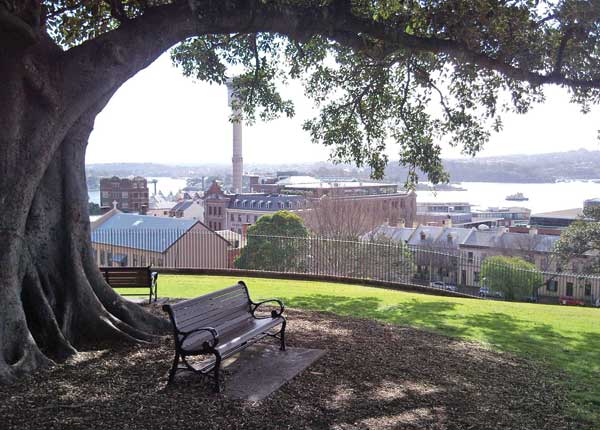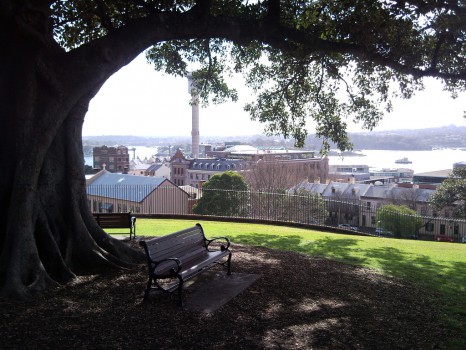The looming sell off of prime CBD waterside public housing assets by New South Wales government has provoked a backlash from tenants, the City of Sydney and community advocates despite a promise that the proceeds of the liquidation will be ploughed back into the state’s social housing system.
Minister for Family and Community Services Pru Goward this week revealed that 293 properties in harbourside Millers Point, Gloucester Street and the Sirius building in The Rocks will be put on the block for private investors to buy, a sale the minister says is necessary because the historic building have become a maintenance money pit that poor value for money compared to newer stock and the requirement of “significant investment” to improve the properties to an “acceptable standard”.
The high prices and demand for property in close proximity to the Sydney CBD makes the liquidation of the public housing stock an appealing option for the government because it could generate comparatively high returns on the sales of these properties that have become regarded by Treasury beancounters as a lazy asset on state’s balance sheet.
Ms Goward said the maintenance on properties in Millers Point costs more than four times the average for public housing dwellings in NSW. The minister is arguing that the sale will lead to better social equity outcomes because far more houses can be procured for the price of the existing ones plus maintenance savings.
“In the last two years alone, nearly $7 million has been spent maintaining this small number of properties. That money could have been better spent on building more social housing, or investing in the maintenance of public housing properties across the state,” Ms Goward said.
Developers and investors have long eyed off the Millers Point stock, originally provided as social housing for wharfies when the area was part a working freight point that earned the nickname of the ‘Hungry Mile’ during the Great Depression because of the lines of unemployed men that often waited for days in the hope of finding work.
Despite the strong links of the working class properties to organised labour movement, Ms Goward wasted no time in sheeting the blame for their decay to the previous Labor government for letting other properties “fall into disrepair” when it began selling off public housing in Millers Point in 2008.
Ms Goward said those sales had left the state with repair bills as high as $800,000 to restore some of the terrace houses to heritage standard.
“The community expects us to invest in a sustainable social housing system which supports disadvantaged people across the whole state. Our ability to do that is severely limited if we sink millions of dollars into a small number of properties,” Ms Goward said.
Subsidies to Millers Point tenants last year reached $8.89 million, with individual tenants receiving subsidies as high as $44,000 per annum, Ms Goward said, adding the costs compared to individual subsidies of $8,000 per year in Campbelltown, $7,000 in Gosford, and $11,000 in Wollongong.
She said for every subsidised tenancy in Millers Point, the government could assist 5 tenants in Warrawong, or 3.5 tenants in Newcastle or Minto.
However at the heart of the matter are the tenants that presently occupy the public houses are now in the crosshairs, with around 400 people now calling the inner city area home potentially being forced to relocate to other public housing complexes across the state.
Ms Goward said a team of more than 40 Housing NSW staff was already on the ground talking to tenants.
This part of the plan will involve a specialist relocations team to work with each and every tenant individual over the next three months to understand their needs and work with them through their relocation.
Ms Goward assured that every tenant will be offered reasonable alternative accommodation and all reasonable costs of moving, including reconnecting utilities will be covered.
However City of Sydney Mayor Clover Moore has fiercely condemned the latest plan for an inner city public housing cleanout by the state government.
Ms Moore said the move was a “shocking sale is devastating for this strong and proud community”.
“For decades, governments have eroded the social heritage of the area by relocating existing tenants, neglecting property maintenance, selling 99 year leases for social housing properties and leaving properties vacant for long periods of time,” Ms Moore said.
She said the residents have been “betrayed” by the government’s decision to sell all these properties without any consultation – adding that the government promised to consult the community on the findings of a recent Social Impact Assessment before any final decision on further sales was made.
“If Housing NSW had been a responsible landlord they never would have allowed these properties to fall into neglect. Does today’s announcement mean all inner city social housing like in Glebe or Woolloomooloo, where people also live in 19th Century homes, is also under threat?” Ms Moore said.






I would like a response to the following questions:
Is the NSW Government removing the public tenants in order that the properties in public ownership can be disposed of to the private sector for demolition and redevelopment?
What heritage protection applies to The Rocks area? Have heritage guidelines been provided for future management of the entire area?
Have alternatives to the sell off, such as a mix of social housing and rental housing available to the public been considered? If yes, what were the options considered?
Has the option of identifying the potential for leasing for commercial uses in a minor proportion of the existing buildings also been considered?
All of the buildings should be assessed and allocated for continued public or private rental housing or commercial uses instead of sale and privatisation of public assets.
The historic buildings give a scale and character to The Rocks that is appreciated and enjoyed by tourists, visitors, and residents of NSW and should be retained for economic, social and environmental reasons.
The government does not pay itself subsidies to cover rent – the only time there is actual, real money subsidised is when a public housing tenant is housing in a private property. The number is a ‘notional’ number – an estimated comparison to the overinflated private rental market. The more public properties that are sold, the less public properties there will be.
The government is not paying subsidies on any of it’s properties in Millers Point.
Social housing is a fiery topic everytime it comes up. I have a mortgage, I cant afford to live at The Rocks or anywhere close to the inner city. New properties further away from the inner city is a more sustainable model. Government should be accountable for how they spend money, however, tenants may also need to make compromises, just like the rest of us do.